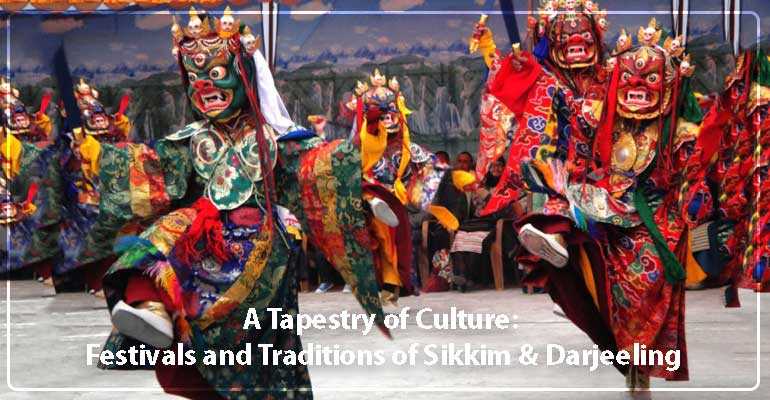In the North Eastern part of India, Darjeeling and Sikkim are preferred as a favourite destination to the travel seekers. These places are not only famous for its beautiful landscape, snow covered mountains, pine forests and more, but these also offer an amalgamation of various festivals and traditions of diverse communities. It represents the bonding among all the religions, inhabited in Sikkim and Darjeeling. In this cultural extravaganza, we will take you to the famous festivals of Sikkim and Darjeeling that define the spirit of these two regions.
Losar Festival
The Losar Festival is celebrated with great enthusiasm in both Sikkim and Darjeeling and it marks the Tibetan New Year. Losar is a time of spiritual renewal and reflection, where locals are engaging in prayers and offerings. In this way they try to take blessings from the deities. During this festival of Sikkim, the sound of traditional Tibetan music and chants, creating the atmosphere of devotion. The main attraction of this festival is mask dancing, performed by monks in the monasteries. This mask dances are not for entertainment purposes but it holds a deep religious significance, portraying stories from Tibetan Buddhist mythology.
Dashain and Tihar
Dashain and Tihar is one of the festivals of Darjeeling, which is celebrated by Nepali communities. This Hindu festival is celebrated on the victory of Goddess Durga over the demon Mahishasura. Tihar is also known as the festival of lights that honors various animals each day. In that festival, the lighting of oil lamps, colorful rangoli decorations, and the exchange of gifts promotes togetherness among the various communities in that region.
Pang Lhabsol
Pang Lhabsol is another traditional festival in Sikkim that worships the third-highest peak in the world. The rituals of this festival are performed at the historic Chogyal's Palace in Gangtok with the masked dances. This festival is a reminder of the bonding of the people of Sikkim with the mountain regions.
Saga Dawa
Saga Dawa is another significant Tibetan Buddhist festival of Sikkim. This occasion falls on the full moon day of the fourth lunar month in the Tibetan calendar. People perform many activities like acts of kindness, making offerings to the temples and monasteries, making prayers and chanting holy mantras etc during the festival. Visiting sacred sites like temples, monasteries and religious places is one of the central practices during the festivals. It encourages virtuous actions throughout the communities.
Bihu Festival
This festival is celebrated by the Assamese community in Darjeeling. Bihu dances is one of the attractions of this vibrant festival, where young men and women perform traditional steps to the beats of the dhol and pepa.
Bumchu
Bumchu is a sacred Tibetan Buddhist festival celebrated in the Himalayan region, particularly in Sikkim. The term "Bumchu'' translates to "pot of prayers" in the Tibetan language. This is also a famous festival in Sikkim. In this festival a copper pot, filled with water, is sealed in the Tashiding Monastery in Sikkim and it is opened by the head of the Lamas of the monastery during the ceremonial ritual. Pilgrims and devotees gather in Tashiding Monastery to see the opening of the sacred pot and to receive blessings.
So, beside the natural beauty, Sikkim and Darjeeling offers various cultural extravaganza, which shows the communal bonding of the different communities in Sikkim and Darjeeling. The festivals and traditions celebrated here clearly show the connection between the people of Sikkim and Darjeeling with their natural surroundings.





(0) Comments:
Leave a Reply